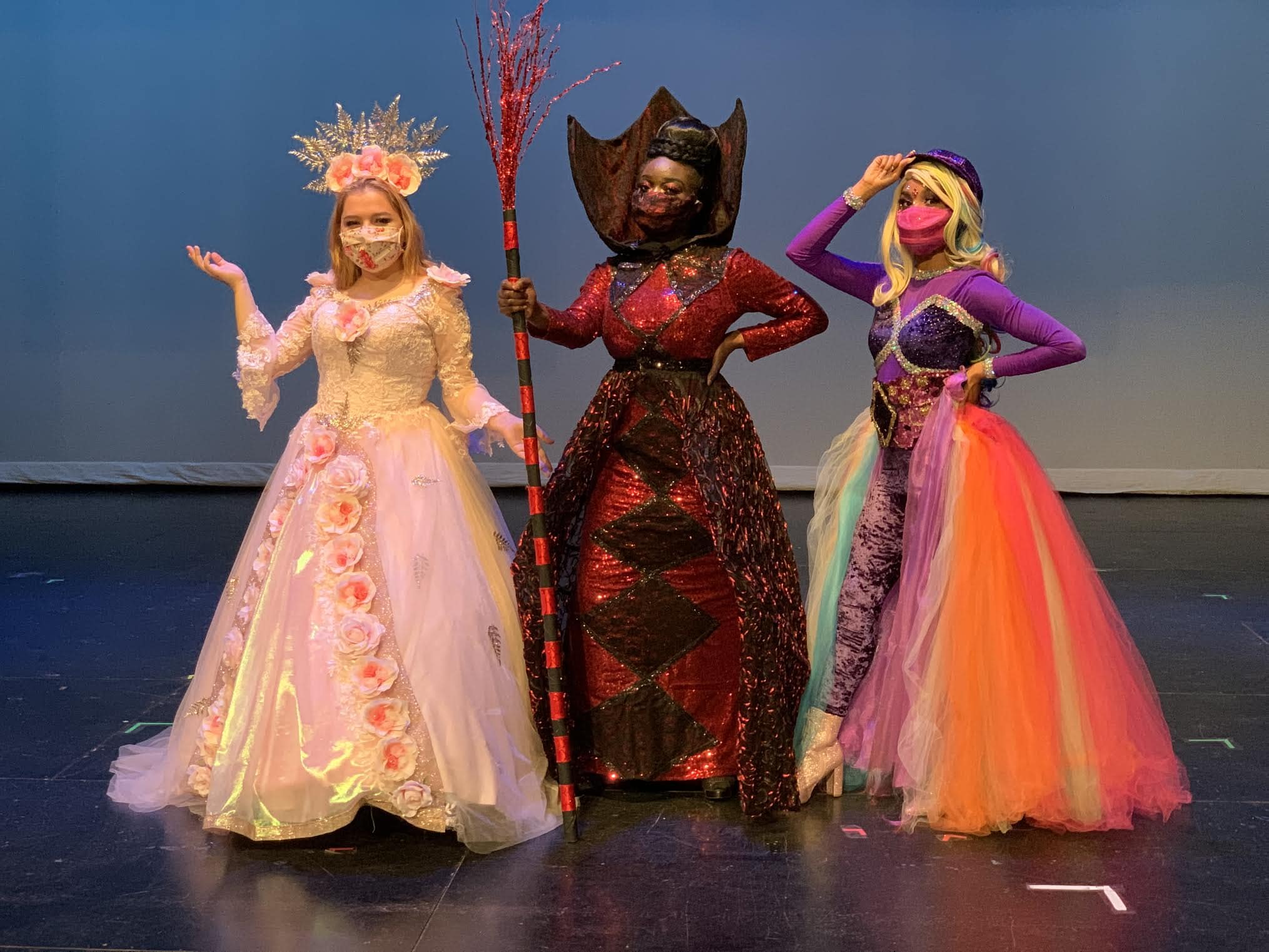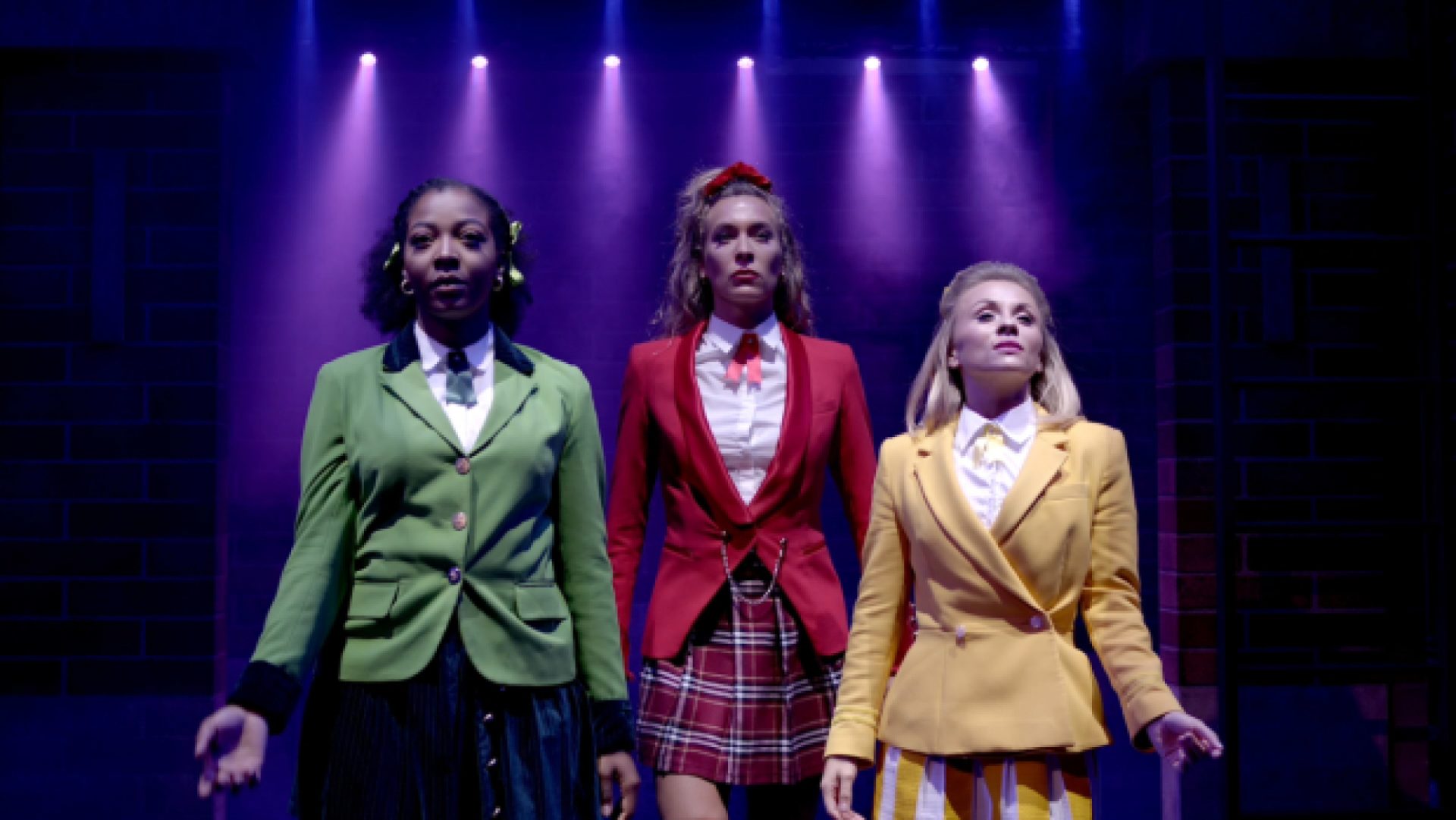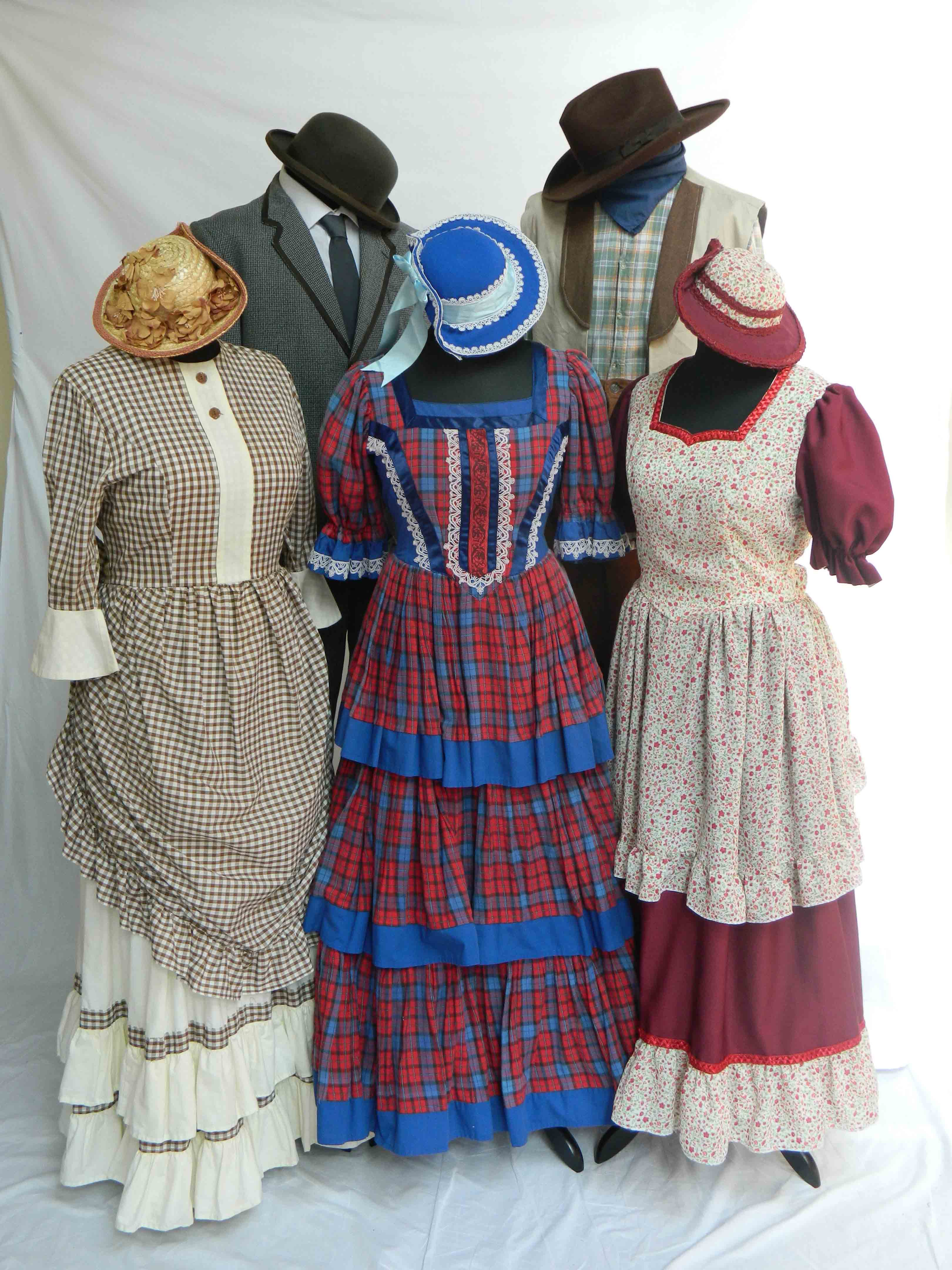Theatrical Outfit - Dressing With Drama
What makes an outfit truly stand out, making heads turn and eyes linger? It's that feeling of being on a stage, even if you're just walking down the street. A theatrical outfit isn't just about clothes; it's about making a statement, a visual story that captures attention and sparks a bit of wonder. You know, like when someone walks into a room and every eye just seems to follow them, that kind of feeling.
This idea of "theatrical" comes from the stage, of course. It's about things that belong to live performances, things that actors wear or the way a play feels. When we talk about an outfit having a theatrical quality, we're thinking about something with a bit of drama, something that might seem larger than life or really make you look. It's almost as if the clothes themselves are performing, you see.
So, what does it mean for your clothes to have that special stage presence? It means they might be a little bit grander, a little more eye-catching, or perhaps they tell a story without saying a word. It's about bringing that stage magic into your daily wear, or for special occasions, making your appearance something truly memorable. It's pretty cool, actually, how clothing can do that.
- Angelina Birthday
- Unicorn In Real Life
- Amy Luciani And Dwight Howard
- Esther Choi Married
- Mia Goth Shia Labeouf Wedding
Table of Contents
- What Makes an Outfit Theatrical?
- How Does Theatrical Style Show Up in Everyday Clothing?
- Bringing Stage Flair to Your Theatrical Outfit Choices
- Is Your Theatrical Outfit Telling a Story?
- The Art of Exaggeration in a Theatrical Outfit
- Understanding Theatrical Looks
- Beyond the Footlights - Theatrical Outfit Ideas
- The Last Word on Your Theatrical Outfit
What Makes an Outfit Theatrical?
When someone mentions something is "theatrical," they are usually talking about things that connect directly to the world of plays and live performances. It's about the stage, the actors, the whole experience of a show unfolding right in front of you. So, a theatrical outfit, by extension, is something that has that same kind of feel. It's not just a regular set of clothes; it’s something that feels like it belongs on a stage, or at least carries that kind of dramatic presence. It’s pretty distinct, you know, when you see it.
It can mean a lot of different things, really. Sometimes, it's about being very showy or grand, like a costume from a big production. Other times, it might just be a little bit over the top, or very expressive, almost as if the person wearing it is putting on a bit of a performance themselves. Think about the way actors carry themselves, or the special clothes they wear to help tell a story. That sense of deliberate presentation, that's what we're getting at with a theatrical outfit. It's more than just what you put on; it's how it makes you feel and how it makes others feel when they see you, in a way.
The core idea, then, is about something that has a connection to the stage, or to the way plays are put on. It’s about the art of performing, and how that can show up in clothing. This means an outfit might be designed to catch the eye, to create a mood, or to suggest a particular character or feeling. It’s about dressing with a purpose beyond just covering up. It's actually a pretty fun way to think about getting dressed, isn't it?
- Hilary Duff Skin
- Renãe Zellweger And Ant Anstead
- Benedict Cumberbatch Abduction
- What Is The State Dog Of Florida
- 17 Diapers Hannah
How Does Theatrical Style Show Up in Everyday Clothing?
You might think "theatrical" means wearing a full-blown costume everywhere, but that's not quite it. The essence of a theatrical outfit can appear in everyday clothes in more subtle, yet still impactful, ways. It’s about bringing a touch of that stage presence to your personal style. For example, a really dramatic scarf, or a coat with a sweeping cut, can give an ordinary look a bit of that stage-ready flair. It’s about choosing pieces that make a statement without being actual costumes, basically.
Consider the difference between someone who works in a Hollywood movie and someone who performs on Broadway. The Broadway actor, in a sense, is more "theatrical" because their performance is live, immediate, and often requires grander gestures and more striking visuals to reach the whole audience. Similarly, a theatrical outfit in daily life often has elements that are bolder, more pronounced, or just more visually interesting than what you might typically see. It’s about making an impression, very much like a performer does, you know.
So, when your clothes have a "theatrical air," it means there’s something about them that suggests a performance. Maybe it's a very striking color combination, or a silhouette that's a bit unusual, or even the way different textures come together. It's about creating a look that feels put-together with a sense of purpose, almost like every piece was chosen to play a part in a bigger scene. It’s quite fascinating, really, how much impact a good outfit can have.
Bringing Stage Flair to Your Theatrical Outfit Choices
To bring that stage flair into your personal wardrobe, you don't need to dress up like a character from a play every day. Instead, think about the qualities that make something "theatrical" and how you can use them. It could be a piece that is very grand, or something that has a spectacular visual appeal. Imagine a coat with a huge collar, or a dress with many layers of fabric that move beautifully when you walk. These are the kinds of details that give a regular outfit a touch of the dramatic. It’s about making choices that stand out, you see.
Another way to think about it is through the idea of something being "extravagantly histrionic." This doesn't mean you're faking emotions, but rather that your outfit has a sense of heightened expression. Perhaps it's a piece of jewelry that is quite large and eye-catching, or a hat that has a unique shape. These items add a sense of performance to your appearance, making your theatrical outfit more than just clothes. They become part of a larger presentation, you know, a bit like a prop in a play.
Even something as simple as how you put pieces together can create a theatrical effect. Layering different textures, combining unexpected colors, or adding accessories that feel a bit like costume pieces – these are all ways to give your look that special stage quality. It’s about being deliberate with your choices, creating a visual story that feels purposeful and interesting. Basically, you're becoming your own costume designer for your everyday life, which is kind of fun.
Is Your Theatrical Outfit Telling a Story?
A theatrical outfit often does more than just cover you; it communicates something. It can suggest a mood, a personality, or even a narrative. Think about how costumes in a play instantly tell you something about a character. A theatrical outfit aims for a similar effect. It's about expressing yourself in a way that feels a bit like a performance, a bit like you're playing a part, even if that part is just "you." It's quite powerful, really, when you consider it.
Sometimes, this means the outfit is "grand and dramatic," as if it’s part of a performance. This could be a flowing cape, a dress with an elaborate train, or a suit with very bold patterns. These elements aren't just for show; they help create an overall impression that is memorable and impactful. They make your appearance feel like a carefully orchestrated scene, which is pretty cool. It's about making a statement without saying a word, so to speak.
Consider a "theatrical display of grief" as an example. This isn't just someone feeling sad; it’s someone showing their sadness in a very obvious, perhaps exaggerated, way. In the same way, a theatrical outfit might feature elements that are very obvious, very striking, and clearly intended to be seen and noticed. It’s about making an impact, about having your clothes speak volumes about your presence. That, is that, what makes it so interesting.
The Art of Exaggeration in a Theatrical Outfit
Exaggeration is a key ingredient in many theatrical outfits. It’s about taking a detail or a silhouette and making it bigger, bolder, or more pronounced than usual. This isn't about being silly; it's about making a visual impact that draws the eye and holds attention. Think about the way stage makeup exaggerates features so they can be seen from far away. A theatrical outfit does something similar with clothing elements. It's a bit like turning up the volume on your style, you know.
This can show up in many forms. It could be a sleeve that is unusually puffy, a collar that stands up very high, or a skirt that has an incredibly wide sweep. These exaggerated features make the outfit feel special, like it belongs to a world where everything is a little more dramatic. It’s about creating visual interest and a sense of flair that goes beyond typical daily wear. It’s quite an art, actually, to get it just right.
The goal of this exaggeration is to create a memorable look, one that suggests a sense of performance or spectacle. It’s about making your presence felt through your clothes, making them an active part of your expression. So, if you're looking to add a theatrical touch to your outfit, don't be afraid to think big with certain elements. It’s often the unexpected, larger-than-life details that truly capture that stage magic, you see.
Understanding Theatrical Looks
To truly get what makes a look theatrical, it helps to think about where the word itself comes from. It’s about anything "of or relating to the theater or the presentation of plays." This broad definition means that a theatrical look can come in many forms, from the very formal and traditional to something quite modern and experimental. The common thread is that connection to performance, to presenting something before an audience. It’s a pretty wide range, really.
When we say something is "suggestive of the theater or of acting," we're talking about a feeling it gives off. It's not just the clothes themselves, but the way they make you feel and the way they are perceived. A theatrical outfit might make you feel more confident, more expressive, or even a little bit like a character in your own story. It's about clothes that have a certain presence, a certain "oomph," that sets them apart from the everyday. It's almost like they have a personality of their own, in a way.
Even academic definitions, like those found in dictionaries, point to this idea of performance. They talk about things being "artificial, pompous, spectacular, or extravagantly histrionic." While "artificial" might sound negative, in this context, it simply means something that is deliberately crafted for effect, rather than being purely natural or accidental. It's about intentional design to create a specific impression, much like a stage designer plans every detail. So, you know, it's about purpose.
Beyond the Footlights - Theatrical Outfit Ideas
So, how can you bring this concept of a theatrical outfit into your own style, even if you’re not an actor? Think about pieces that have a dramatic silhouette, like a coat with a very wide skirt or sleeves that billow. Materials that catch the light, like velvet or satin, can also add a sense of luxury and stage presence. It’s about choosing items that feel special, that have a bit of sparkle or an unusual texture. You could also consider bold patterns, perhaps even ones that tell a little story on their own. Basically, anything that makes a statement can work, you see.
Accessories are another great way to add theatrical flair. A large, ornate necklace, a pair of very long gloves, or a hat with a striking feather can transform an otherwise simple outfit into something much more dramatic. These are the elements that often get noticed first, and they can really tie a theatrical outfit together. They're like the finishing touches on a stage set, making everything look just right. It's pretty amazing how much difference a single accessory can make, isn't it?
And remember, it’s not just about the individual pieces, but how you put them together. Layering different textures, playing with contrasting colors, or combining unexpected items can create a look that feels unique and expressive. It's about creating a visual narrative, making your outfit tell a little story about who you are or how you feel. It’s about embracing that sense of performance in your daily life, and making every day a little bit more interesting, you know.
The Last Word on Your Theatrical Outfit
The idea of a theatrical outfit is all about embracing drama, expression, and a bit of performance in what you wear. It draws from the world of live theater, where every visual element is carefully chosen to create an impact and tell a story. Whether it’s through grand silhouettes, eye-catching details, or a sense of deliberate exaggeration, a theatrical outfit aims to capture attention and make a lasting impression. It’s about dressing in a way that feels purposeful and exciting, making your appearance a kind of visual spectacle. It's a pretty cool way to approach dressing, actually.
- Lou Diamond Phillips Arrested
- Luka Kuzmic
- Amal Clooney Ivf
- Who Was Hall Talking About In The Podcast
- Blue I V Y Pregnant

Cedar Hill Theatre Wins "Best Costume Design" - Focus Daily News

Top 10 Iconic Musical Theatre Costumes - Theatre Haus

Oklahoma Musical Theatre Costume Hire for UK Productions of Oklahoma